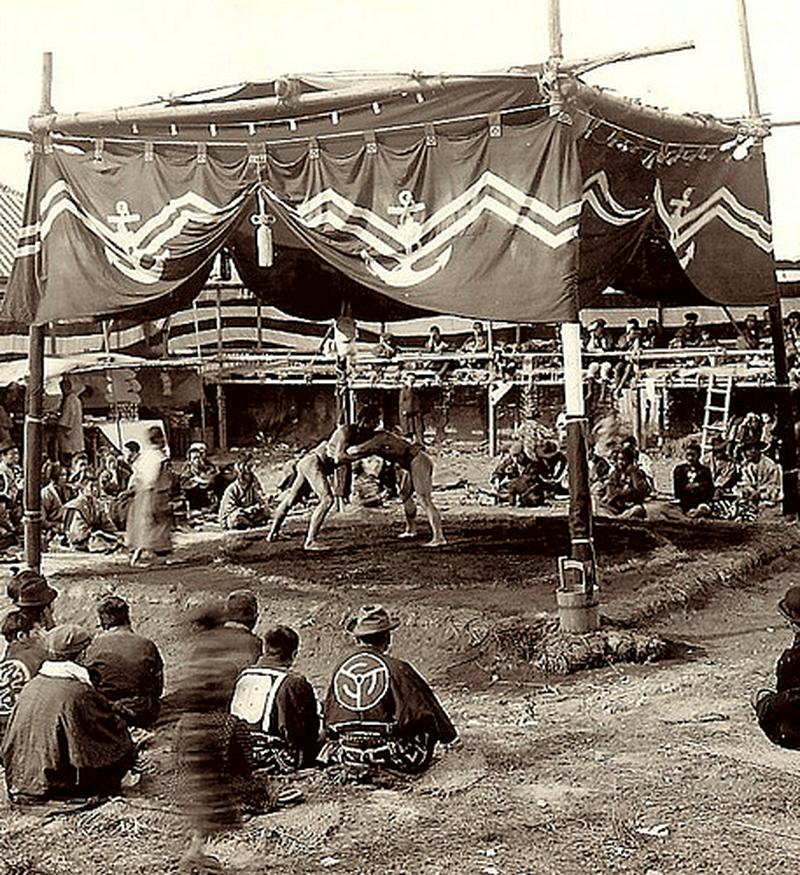Life in Japan In The 1800s
By | February 19, 2017

The late 19th Century marked the end of the 264-year long isolationist, stagnant Edo period and the ushering in of the Meiji Restoration. Life in Japan between 1860 and 1900 was marked by drastic social, political, and infrastructural changes which opened up Japan to the rest of the world, and helped to create the Japanese culture that we know today.
One major change was the dissolution of an entire class of people: the Samurais. This esteemed group were the military nobility and were the only armed force in Japan. By the 16th Century, after centuries of in-fighting, the Samurai’s role was focused on spiritual guidance instead of battle. They were a sight to behold when they were fully armoured. The cuirass (upper body armour) was made with lamellae, which are oblong pieces of steel linked with leather. Their helmets were usually equipped with a front crest or helm as well as a hair pommel, while their face masks were painted with ugly features, intended to terrify their enemies. Neck curtains, shoulder guards and thigh guards provided extra protection. By 1873, Emperor Meiji removed their right to be the only armed force and he adapted a western-style national army structure. Stripping their status was followed by the removal of their right to wear a katana (traditional Japanese sword) and to execute commoners who were disrespectful to them. Although their status was removed, the Samurais were literate and well-educated, so many went on to serve in the army, or become teachers, businessmen, writers, or government workers.
Another noticeable difference in Japanese society at the time was the change in clothing. The government, and by extension, the army, were among the first to wear western clothing for official occasions. However, this type of clothing was restrictive and did not accommodate daily Japanese activities like sitting on the floor or removing your shoes when you enter a house. Traditional Japanese clothing remained the norm for quite some time because loose-fitting T-shaped robes with large sleeves (kimonos) were more appropriate. Whether the locals were working on farms, having a meal at home, or attending a special occasion, various styles of the kimono will would be worn. The robe will usually be worn with geta or zori – footwear that resembled flip-flops.
House-styles changed during this period as well. Traditionally, houses were either pit-dwellings, which were covered with grass, or elevated houses which were built a few feet above the ground. During the Meiji Restoration period, more locals began to copy the house designs of the Samurais. Houses were now built with wood and were equipped with shojis (framed room dividers), fusumas (sliding panels) and engawas (balconies). Unlike the western world, Japanese houses had little furniture. The locals usually kneeled to prepare food, eat, pray, play games, paint, and any other activity that required a sturdy surface. If they had furniture, it was only about two feet above the ground. They sat and slept on tatamis, which is a type of mat/flooring material that is made using rice straw. To this day, some Japanese homes still have tatamis and floor-level seating and beds.
During the Meiji period, there were also changes in the eating habits of the Japanese. Polished rice, soy sauce, tea, and sugar became more popular. Eating seafood was no longer a local preference, but it became a nation-wide practice due to widespread communication and increased social mobility.
In only 40 years, Japan was transformed from a traditional society to one that was becoming a global force to be reckoned with. The people’s relatively quick adherence to these changes display how their loyalties to the emperor have shaped the culture of obedience and harmony that is still present to this day.


